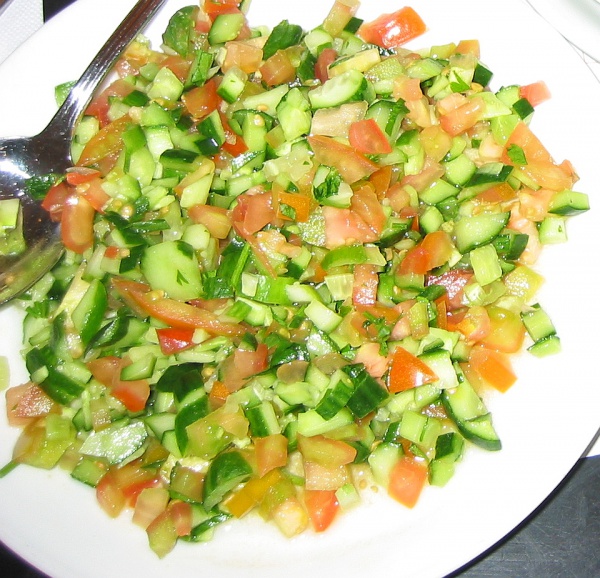Facts About Israeli salad
Israeli salad is a cherished dish, made with finely chopped tomatoes, onions, cucumbers, and bell or chili peppers. It is considered a national dish of Israel and is a staple at many Israeli meals. This salad is prevalent throughout the Eastern Mediterranean and goes by various names across different cultures. In Israel, it’s known as "salat katzutz" "salat aravi" or "salat yerakot." Palestinians may refer to a similar dish as "salatat al-bandura" or "salata na'meh."
The salad typically includes raw vegetables such as tomatoes, onions, cucumbers, and occasionally peppers, carrots, scallions, leafy greens, and parsley. It’s often dressed with lemon juice, olive oil, za'atar, yogurt, sumac, or tahini. Notably, cucumbers are usually left unpeeled, and the precise chopping of vegetables is considered a mark of culinary skill. Traditional recipes generally avoid including lettuce.
Israeli salad is commonly served in many Israeli restaurants and cafes, either as a side dish, accompanying main courses, or stuffed in a pita with falafel or shawarma. It was once a central part of traditional Israeli breakfasts and remains a common feature at buffet breakfasts in Israeli hotels.
The origins of Israeli salad can be traced back to Palestinian Arab salads, with influences from Ottoman cuisine. Jewish immigrants who arrived in the late 19th century in Ottoman Palestine helped popularize this salad, with various Jewish communities in Israel adding their unique accents. Similar chopped salads can also be found in other Middle Eastern countries like Iran and Turkey, as well as on the Indian subcontinent.

 Lebanon
Lebanon